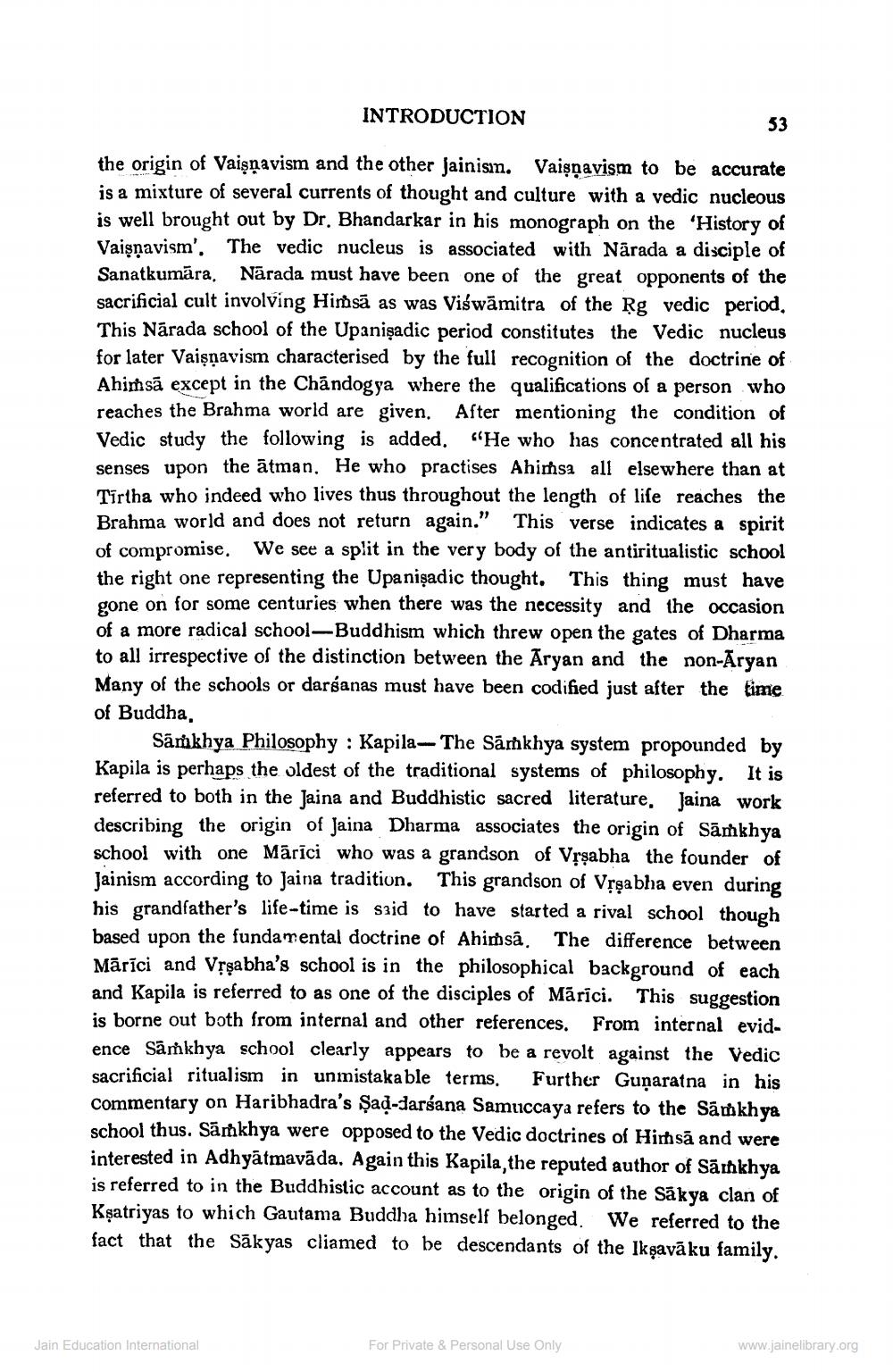________________
INTRODUCTION
the origin of Vaişņavism and the other Jainism. Vaişņavism to be accurate is a mixture of several currents of thought and culture with a vedic nucleous is well brought out by Dr. Bhandarkar in his monograph on the 'History of Vaisnavism'. The vedic nucleus is associated with Nārada a disciple of Sanatkumāra. Nārada must have been one of the great opponents of the sacrificial cult involving Himsā as was Viśwāmitra of the Rg vedic period. This Nārada school of the Upanişadic period constitutes the Vedic nucleus for later Vaisnavism characterised by the full recognition of the doctrine of Ahimsā except in the Chándogya where the qualifications of a person who reaches the Brahma world are given. After mentioning the condition of Vedic study the following is added, "He who has concentrated all his senses upon the ātman. He who practises Ahimhsa all elsewhere than at Tirtha who indeed who lives thus throughout the length of life reaches the Brahma world and does not return again." This verse indicates a spirit of compromise. We see a split in the very body of the antiritualistic school the right one representing the Upanişadic thought. This thing must gone on for some centuries when there was the necessity and the occasion of a more radical school-Buddhism which threw open the gates of Dharma to all irrespective of the distinction between the Aryan and the non-Aryan Many of the schools or darganas must have been codified just after the time of Buddha,
Samkhya Philosophy : Kapila-- The Sāmkhya system propounded by Kapila is perhaps the oldest of the traditional systems of philosophy. It is referred to both in the Jaina and Buddhistic sacred literature. Jaina work describing the origin of Jaina Dharma associates the origin of Sāmkhya school with one Mārīci who was a grandson of Vrşabha the founder of Jainism according to Jaina tradition. This grandson of Vrşabha even during his grandfather's life-time is said to have started a rival school though based upon the fundamental doctrine of Ahimsã. The difference between Mārīci and Vrşabha's school is in the philosophical background of each and Kapila is referred to as one of the disciples of Mārīci. This suggestion is borne out both from internal and other references. From internal evidence Sāṁkhya school clearly appears to be a revolt against the Vedic sacrificial ritualism in unmistakable terms. Further Gunaratna in his commentary on Haribhadra's Şad-darśana Samuccaya refers to the Samkhya school thus. Sāmkhya were opposed to the Vedic doctrines of Hirhsá and were interested in Adhyātmavāda. Again this Kapila, the reputed author of Sähkhya is referred to in the Buddhistic account as to the origin of the Sākya clan of Ksatriyas to which Gautama Buddha himself belonged. We referred to the fact that the Sākyas cliamed to be descendants of the Iksavāku family.
Jain Education International
For Private & Personal Use Only
www.jainelibrary.org




